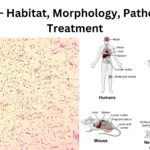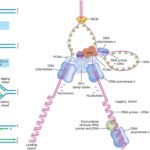IB Biology 29 Views 1 Answers
Sourav PanLv 9November 8, 2024
What features are characteristic of birds, mammals, amphibians, reptiles, and fish?
What features are characteristic of birds, mammals, amphibians, reptiles, and fish?
Please login to save the post
Please login to submit an answer.
Sourav PanLv 9May 15, 2025
The distinguishing features of birds, mammals, amphibians, reptiles, and fish reflect their adaptations to different environments and evolutionary histories. Here’s a summary of the key characteristics for each group:
1. Birds (Class Aves)
- Feathers: Unique to birds, feathers provide insulation and enable flight.
- Endothermic: Birds are warm-blooded, maintaining a constant body temperature.
- Wings: Forelimbs modified into wings for flight; some species are flightless.
- Hard-shelled Eggs: Birds lay eggs with a protective shell, which provides a safe environment for the developing embryo.
- Respiratory System: Highly efficient system with air sacs allowing for unidirectional airflow through the lungs.
2. Mammals (Class Mammalia)
- Mammary Glands: Female mammals possess mammary glands that produce milk to nourish their young.
- Fur or Hair: Most mammals have hair or fur covering their bodies, providing insulation.
- Endothermic: Mammals are warm-blooded, capable of regulating their internal body temperature.
- Complex Brain: A well-developed brain with a neocortex region associated with higher functions such as reasoning and problem-solving.
- Live Birth: Most mammals give birth to live young (with exceptions like monotremes that lay eggs).
3. Amphibians (Class Amphibia)
- Moist Skin: Amphibians have smooth, moist skin that is permeable to water and gases; they rely on it for respiration.
- Metamorphosis: They undergo a life cycle that includes a larval stage (typically aquatic) and an adult stage (often terrestrial).
- Cold-blooded: Amphibians are ectothermic (cold-blooded), relying on external sources to regulate body temperature.
- Eggs in Water: They lay eggs in water, which are typically surrounded by a jelly-like substance for protection.
4. Reptiles (Class Reptilia)
- Scaly Skin: Reptiles have tough, dry skin covered with scales or scutes that prevent water loss.
- Cold-blooded: Like amphibians, reptiles are ectothermic and depend on environmental heat sources.
- Internal Fertilization: Most reptiles reproduce through internal fertilization and lay eggs with leathery shells or give live birth.
- Lungs for Breathing: All reptiles breathe air through lungs; they do not have gills at any stage of life.
5. Fish (Class Pisces)
- Gills: Fish possess gills for extracting oxygen from water, allowing them to breathe underwater.
- Fins and Scales: They have fins for swimming and scales covering their bodies for protection.
- Cold-blooded: Fish are ectothermic, regulating their body temperature based on the surrounding water temperature.
- Reproduction: Most fish reproduce by laying eggs in water; some exhibit internal fertilization.
Summary Table of Key Features
| Group | Key Features |
|---|---|
| Birds | Feathers, endothermic, wings, hard-shelled eggs |
| Mammals | Mammary glands, fur/hair, endothermic, complex brain |
| Amphibians | Moist skin, metamorphosis, cold-blooded, aquatic eggs |
| Reptiles | Scaly skin, cold-blooded, internal fertilization |
| Fish | Gills, fins/scales, cold-blooded, mostly egg-laying |
0
0 likes
- Share on Facebook
- Share on Twitter
- Share on LinkedIn
0 found this helpful out of 0 votes
Helpful: 0%
Helpful: 0%
Was this page helpful?




